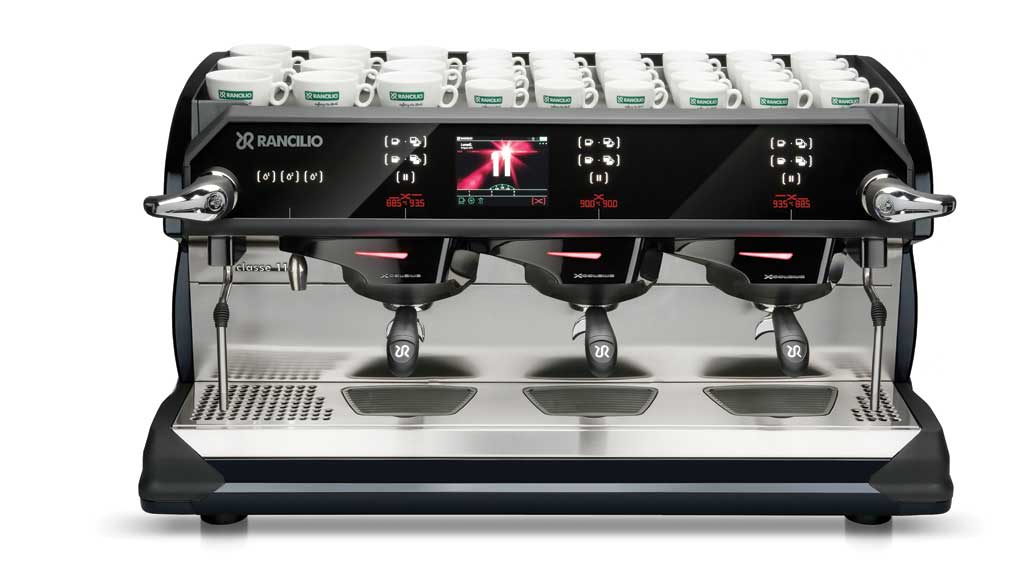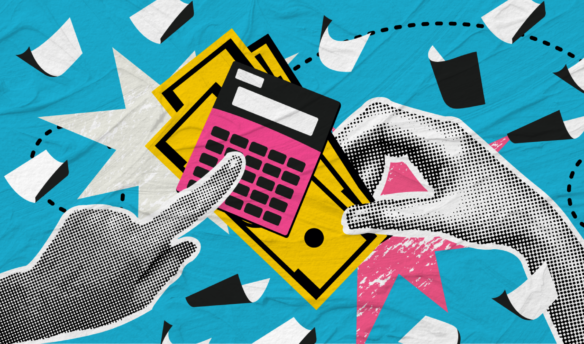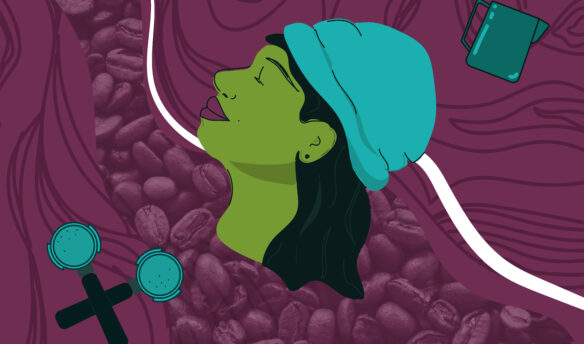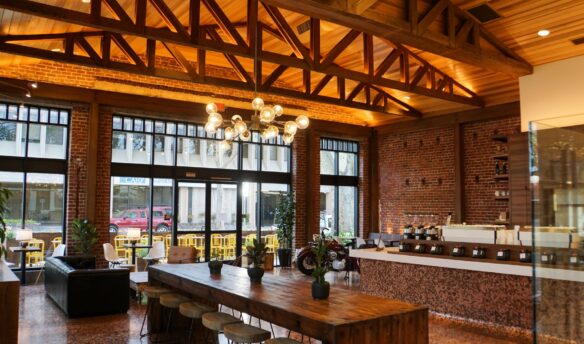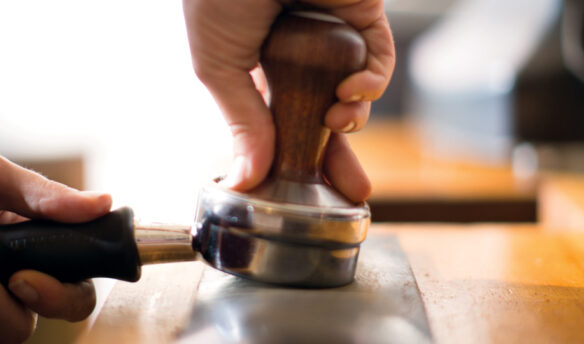[R]apid advances in processing chip technology have transformed the task of pulling espresso shots from a job of significant guesswork and best intentions into a science of data-driven, programmable recipe execution. Today’s newest espresso machines come equipped with software that can perform all kinds of functions, from timing changes in pressure to cutting off flow at the desired weight of the final shot.
Stephen James Davidson, quality control manager for Blue Bottle New York, sees several key differences between working with digital and manual espresso equipment. “A fully manual espresso machine takes much more intuition, patience, and acceptance than an automated machine,” Davidson says. “You don’t have all the bells and whistles to check your work fully without tasting the coffee—and you can’t taste every shot.”
Many cafés opting for digitally programmable espresso equipment do so because it offers repeatability and speed not available with manual machines, permitting them to best manage the demands of a high volume bar. Devoción, a busy café-roastery in Brooklyn, New York, meets volume demand with Xcelsius models of the Rancilio Classe 11 and 9. “It allows us to start with one extraction temperature and finish with a different one, so you have more flexibility with what the temperature allows us to pull out in terms of acidity or brightness,” says Nick Moers, Devoción’s lead trainer.
Consistent delivery of quality is desirable because it builds the reputation of a shop. Jonathan Amos works with La Colombe’s wholesale education and training program, where he also works with Sanremo Coffee Machines’ innovative Opera espresso machine.
“The Sanremo Opera is one of my favorite machines. It’s ultra-customizable with six different options for brewing parameters. We use this for our natural Ethiopia Ardi,” Amos says. “If you pull it on a regular machine with nine straight bars of pressure, no matter how well you adjust the grind, you’re going to get some sort of funk on the back. But when you drop the pressure towards the end, you get a really nice sweetness.”
The Sanremo Opera includes the capacity to regulate an important dimension not often embedded in espresso equipment: weight. The machine automatically stops pulling a shot after hitting a targeted number of grams, rather than operating by time. Built-in Acaia scales support this functionality.
Kohout, sales manager for Acaia US explains that, “the Opera uses Acaia Links integrated technology. There is one board for each group that connects to custom Lunar scales via Bluetooth.” Using Sanremo’s Express Yourself technology, the barista can set the desired shot size. “The only physical input on-machine is the start of the shot, and the machine handles the rest,” he says.
For Erica Lee Vonie, director of coffee at Variety Coffee Roasters, the responsiveness of a machine is paramount when juggling variables during the rush of service. “I like how instantly programmable the Opera is. It’s really difficult when you’re on bar and something’s gone wrong and you have to change something quickly. Because there are six different recipes for each group you can easily fix it.”
Variability between groupheads is another advantage offered by digital espresso technology, like the digital programmability offered by new equipment manufacturer Mavam. The company offers made-to-order, hand-built machines out of Seattle, Washington, based on a design concept that combines the minimalism of an “invisible” under-bar boiler with full digital programmability.
Walter’s Coffee uses the Mavam in their new Brooklyn location. “You can do manual or automatic,” notes Michael “Panda” Fernandez, director of Walter’s Brooklyn store. “Pre-infusion is set to two bars, and then you can hit a button and the pressure increases to nine bars. You can have manual on one group and automatic on the other, actually having two separate machines in one unit.” Fernandez says the machine is useful for speed of service—with the touch of a button, the machine executes both the pre-infusion and the full nine bars. “The barista can make multiple drinks at once, which saves time,” he says.
This is always the delicate balance—how can coffee be both speedy and replicable, but also a handmade craft product? Even in the age of digital espresso, that balance is possible.
“Both automated and manual machines have their places in a café, and both are simply based on preference,” says Davidson of Blue Bottle. He explains that a successful café is a combination of the barista manning the bar and the design of the café. “Part of the usability of any machine is not necessarily the equipment itself, but how it fits into the overall bar flow. For open-concept cafés that choose to make the theater of espresso-crafting a focal part of the café experience, screens with digital read outs and blinking numbers might be a detraction.”
Showmanship aside, Moers notes that for Devoción, there are certain flavor attributes of an espresso shot only achievable using the shop’s manual option, a Kees van der Westen Mirage. The Mirage uses spring activation instead of a motor for pressure, pulling only four to six bars of pressure instead of the standard nine. “With the lever machine, everything is built on the particle size of the coffee and how much pressure is being pushed through it. You’ll often get a thicker body or a better crema,” Moers says. “For the body of a shot, any lever or fully manual machine performs noticeably better than digital.”
While Davidson has experienced the joy of dialing in vintage machines, he likes being able to focus on customers. “My preference at the end of the day is the La Marzocco Linea,” he says. “I tend to lean into hospitality when I am on bar, and I prefer a machine where I can dial in and simply monitor as I make coffee, and be of service to my guests.”
All espresso equipment involves a learning curve, and as more and more baristas come of age in our current screen-centric culture, digital machines might become the more intuitive option, therefore making manual equipment an exciting alternative in the risk of imperfection they permit.
—Rachel Northrop is a sales rep with Ally Coffee’s specialty importing division.



